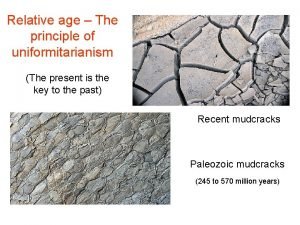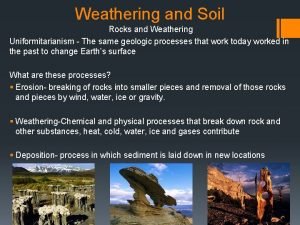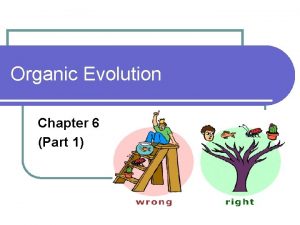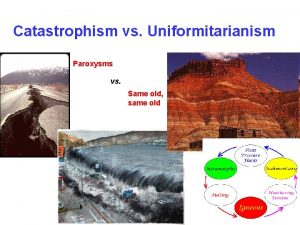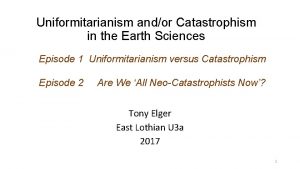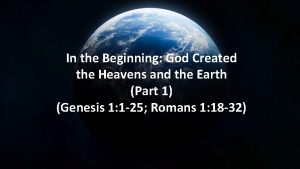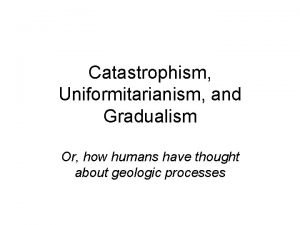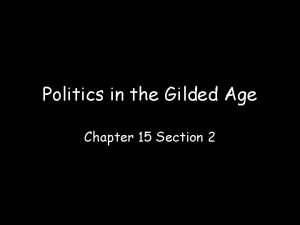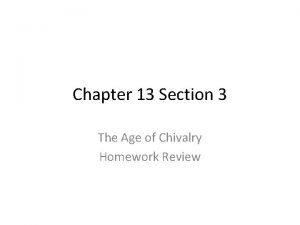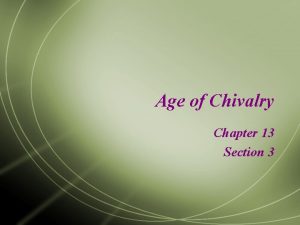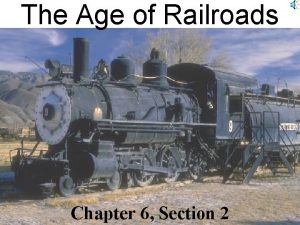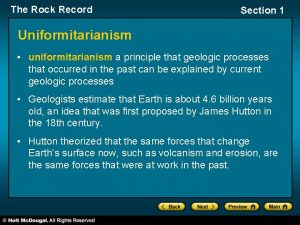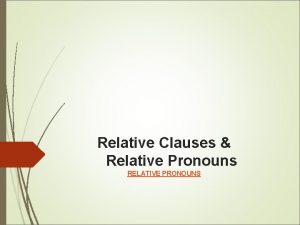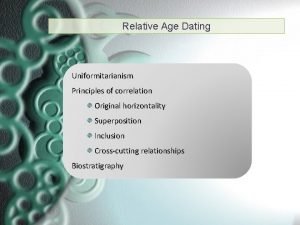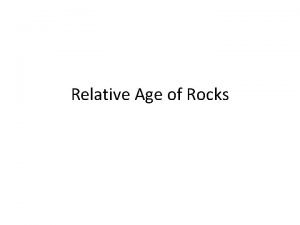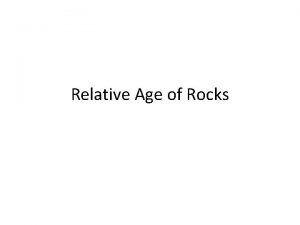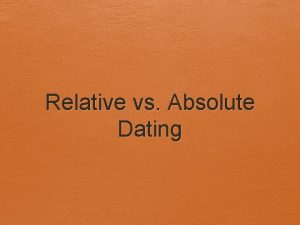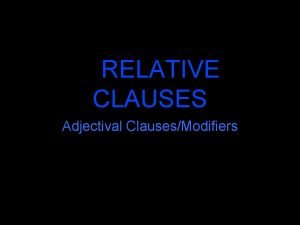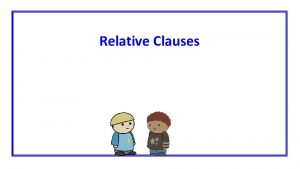Chapter 8 section 1 RELATIVE AGE I Uniformitarianism














- Slides: 14

Chapter 8 section 1 RELATIVE AGE

I. Uniformitarianism • A. James Hutton – 1. observed geological changes on his farm – 2. thought that forces that changed the landscape on his farm had changed Earth’s surface in past. • B. Principle that current geologic processes (volcanism/erosion) are the same processes that were at work in the past. • C. Basic foundation of science of geology. • D. While processes are the same, the rates of the processes may vary over time.

• E. Before Hutton’s research, people thought Earth was only 6, 000 years old. • F. They thought all geologic features formed at the same time.

II. Relative Age • A. Strata- layers of rock – 1. show the sequence of events that took place in the past. • B. Relative age indicates that one rock layer is OLDER or YOUNGER than another rock layer. • C. All rocks can form in layers, but geologists study mainly sedimentary rocks. • D. Using certain principles scientists can determine the order in which layers formed.

III. Law of Superposition • A. States that the undeformed sedimentary rock layer is older than the layers above it and younger than the layers beneath it. – 1. sedimentary rocks form when new sediments are deposited on top of old layers of sediment’ – 2. as they accumulate, they are compressed and become cemented in rock layers B. Beds- layers of sedimentary rock C. Bedding plane- the boundary between two beds.


IV. Principle of Original Horizontality A. Sedimentary rocks generally form in horizontal layers B. POH states that sedimentary rocks left undisturbed will remain in horizontal layers. C. Therefore, scientists can assume that sedimentary rock not in horizontal layers but have been tilted or deformed by crustal movements that happened AFTER the layer was formed.

V. Types of bedding (layers of rock) – A. Graded bedding • 1. In some depositional environments. The largest particles of sediment are deposited at the bottom. • 2. If larger particles are in the top layers, the layers may have been overturned by tectonic forces. – B. Cross-beds • 1. A clue to the original position is the shape of the bedding planes. • 2. when sand is deposited, sediment forms at an angle to the bedding plane (CROSS BED) • 3. Appears curved at the bottom and cut off at the top. • 4. studying shape can determine original position of layers. – C. Ripple Marks • 1. waves that form on the surface of sand due to action of water or wind. • 2. When preserved in sandstone and undisturbed, the ripples point upward.


VI. Unconformities • A. Movement of Earth’s crust can lift up rock layers that were buried and expose them to erosion. • B. Sediments are deposited and form new layers in place of the eroded layers. • C. Missing layers create a break in the geologic record called UNCONFORMITY.

• D. 3 types – 1. Nonconformity- a stratified rock (layered) rests upon an unstratified rock. – 2. Angular conformity- the boundary between a set of tilted layers and a set of horizontal layers – 3. Disconformity- the boundary between horizontal layers of older rock , and younger overlying layers that are deposited on an eroded surface. • E. All rock beneath an unconformity are older than the rocks above the unconformity (according to the Law of Superposition)


VII. Crosscutting Relationships – A. The law of crosscutting relationships is that a FAULT or igneous INTRUSION is always younger than all the rocks it cuts through above and below the conformity. • Fault- a break or crack in Earth’s crust along which rocks shift their position • Intrusion- a mass of igneous rock that forms when magma is injected into rock then cools and solidifies.

By the law of superposition, A is the oldest rock layer, then B, then C According the law of crosscutting, the intrusion is younger than A, B, and C. The fault cuts through all 4 layers so is younger than A, B, C, D and the intrusion. `
 Conformity
Conformity Iron age dates
Iron age dates Iron age bronze age stone age timeline
Iron age bronze age stone age timeline Uniformitarianism examples
Uniformitarianism examples Hutton's principle of uniformitarianism
Hutton's principle of uniformitarianism Uniformitarianism examples
Uniformitarianism examples Whats uniformitarianism
Whats uniformitarianism Princlble
Princlble Uniformitarianism drawing
Uniformitarianism drawing Uniformitarianism
Uniformitarianism Uniformitarianism vs gradualism
Uniformitarianism vs gradualism Pendleton civil service act
Pendleton civil service act The age of chivalry section 3
The age of chivalry section 3 Knight in feudal society war games
Knight in feudal society war games Chapter 6 section 2 the age of railroads
Chapter 6 section 2 the age of railroads
